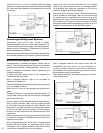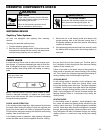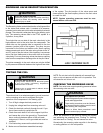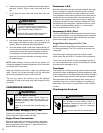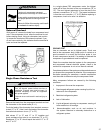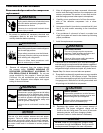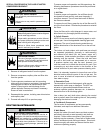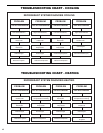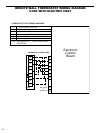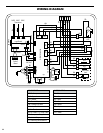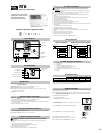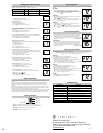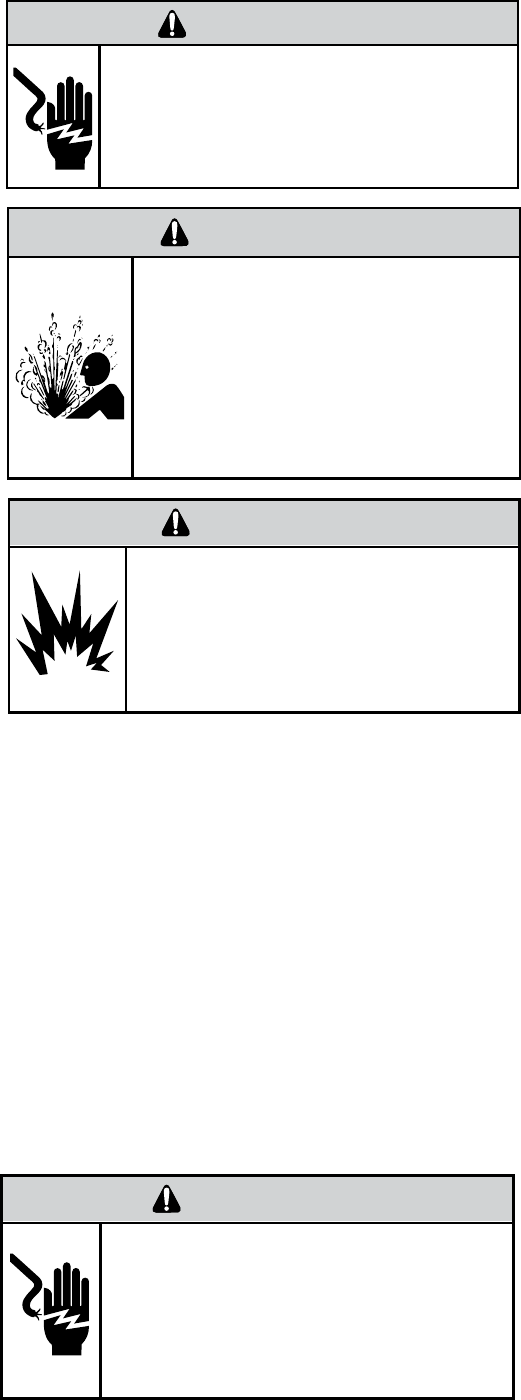
1.
2.
3.
4.
5.
ELECTRIC SHOCK HAZARD
WARNING
Turn off electric power before service or
installation.
Failure to do so may result in personal injury,
or death.
Sealed Refrigeration System contains refrigerant
and oil under high pressure.
Proper safety procedures must be followed,
and proper protective clothing must be worn
when working with refrigerants.
Failure to follow these procedures could
result in serious injury or death.
WARNING
HIGH PRESSURE HAZARD
The use of nitrogen requires a pressure
regulator. Follow all safety procedures and
wear protective safety clothing etc.
Failure to follow proper safety procedures
result in serious injury or death.
WARNING
EXPLOSION HAZARD
Recover all refrigerant and oil from the system.
Remove compressor, capillary tube and fi lter drier
from the system.
Flush evaporator condenser and all connecting
tubing with dry nitrogen or equivalent. Use approved
fl ushing agent to remove all contamination from
system. Inspect suction and discharge line for
carbon deposits. Remove and clean if necessary.
Ensure all acid is neutralized.
Reassemble the system, including new drier strainer
and capillary tube.
Proceed with step 8-10 on previous page.
SPECIAL PROCEDURE IN THE CASE OF MOTOR
COMPRESSOR BURNOUT
39
ROUTINE MAINTENANCE
ELECTRICAL SHOCK HAZARD!
WARNING
Turn off electrical power before service or
installation. All eletrical connections and wiring
MUST be installed by a qualifi ed electrician
and conform to the National Code and all local
codes which have jurisdiction. Failure to do so
can result in property damage, personal injury
and/or death.
To ensure proper unit operation and life expectancy, the
following maintenance procedures should be performed
on a regular basis
1. Air Filter
To ensure proper unit operation, the air fi lters should
be cleaned at least monthly, and more frequently if
conditions warrant. The unit must be turned off before
the fi lters are cleaned.
To remove the air fi lters, grasp the top of the fi lter and lift
out of the front cabinet. Reverse the procedure to reinstall
the fi lters.
Clean the fi lters with a mild detergent in warm water, and
allow them to dry thoroughly before reinstalling.
2. Coils & Chassis
NOTE: Do not use a caustic coil cleaning agent on coils
or base pan. Use a biodegradable cleaning agent and
degreaser. The use of harsh cleaning materials may
lead to deterioration of the aluminum fi ns or the coil end
plates.
The indoor coil and outdoor coils and base pan should
be inspected periodically (annually or semi-annually)
and cleaned of all debris (lint, dirt, leaves, paper, etc.)
as necessary. Under extreme conditions, more frequent
cleaning may be required. Clean the coils and base
pan with a soft brush and compressed air or vacuum.
A pressure washer may also be used, however, you
must be careful not to bend the aluminum fi n pack. Use
a sweeping up and down motion in the direction of the
vertical aluminum fi n pack when pressure cleaning coils.
Note: It is extremely important to insure that none of the
electrical and/or electronic parts of the unit get wet. Be
sure to cover all electrical components to protect them
from water or spray.
3. Decorative Front
The decorative front and discharge air grille may be
cleaned with a mild soap or detergent. Do NOT use
solvents or hydrocarbon based cleaners such as
acetone, naphtha, gasoline, benzene, etc., to clean the
decorative front or air discharge grilles.
Use a damp (not wet) cloth when cleaning the control
area to prevent water from entering the unit, and possibly
damaging the electronic control
4. Fan Motor & Compressor
The fan motor & compressor and are permanently
lubricated, and require no additional lubrication.
5. Wall Sleeve
Inspect the inside of the wall sleeve and drain system
periodically (annually or semi-annually) and clean as
required. Under extreme conditions, more frequent
cleaning may be necessary. Clean both of these areas
with an antibacterial and antifungal cleaner. Rinse both
items thoroughly with water and ensure that the drain
outlets are operating properly.




